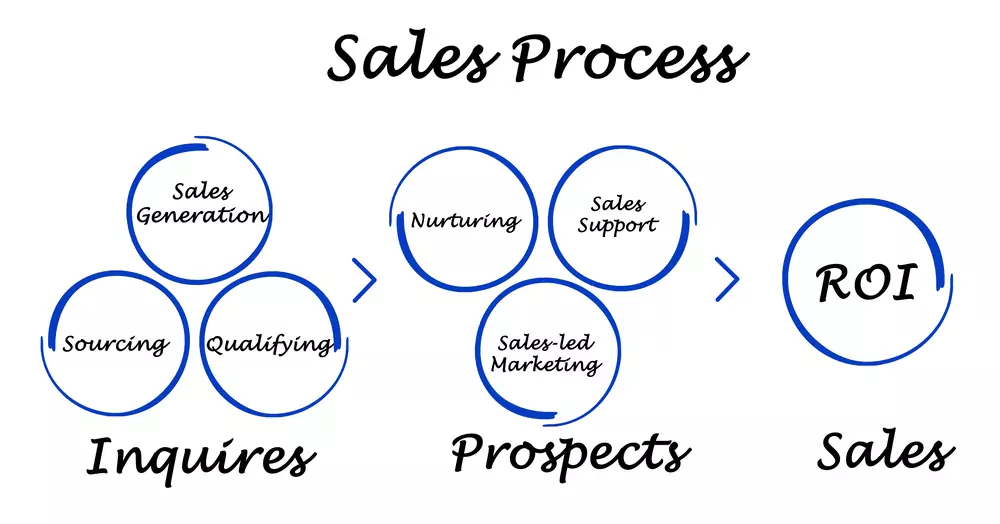Sales staff turnover is bound to happen at your company. According to the Bureau of Labor Statistics, the United States annual total separation rate hovered at 45% in 2019, a rate that has steadily increased since 2015. A 2018 report by LinkedIn found sales roles have above-average turnover compared to other positions.
Your sales members bring you business, increase brand awareness, and help your company grow. When you lose a member of your sales staff, that can put a kink in a well-oiled selling machine. You don’t want to lose sales momentum, which is why it's essential to prepare for when sales members leave.
Keep these best practices in mind for ensuring when a sales member departs your company, there’s a smooth transition that keeps sales happening efficiently.
1. Use a CRM System
If you’re not already using technology to keep track of leads and clients, consider what happens when you don’t have a centralized system in place to manage contacts.
- The sales rep who’s leaving retains control of the information they've gathered.
- Leads and clients will get frustrated when a new rep contacts them and makes the sales process redundant.
- Your business could lose out on valuable relationships since you don’t have accurate records.
A customer relationship management (CRM) tool or lead management software provides easy access and transparency into the client and lead relationships. New sales members will be able to instantly pick up where the previous sales member left off, so the relationship with your company can continue without missing a beat.
2. Define a Clear Sales Process
Set sales reps up for success by creating a clearly defined sales process that enables them to engage new prospects and turn them into customers. With a process in place, new sales members will be able to fall in line and engage leads and customers according to your sales team’s methods.

Clients will feel at home with their new rep and the team can adjust to new sales members more easily since they’re following the set process.
3. Have a Transition Procedure
When a rep leaves, you’ll want to take steps to ensure their business stays with your company and doesn’t depart along with the rep. You’ll want to:
Conduct a pipeline audit on the departing rep's leads, clients, proposals, and quotations
Find out what deals are pending. Ask where they are in each relationship, what the next steps are, and recommendations they have for the rep who handles each account next.
Obtain any files and information on the accounts from the departing rep. This should all be in your CRM, as well.
If you're the one letting go of a sales rep, try to start this process prior to their departure. During your meeting with the rep, make sure your IT department turns off access to their email account and the CRM so they don’t try to take this information with them on their way out.
Update lead and customer status in the CRM
Revise statuses in your digital files so your remaining and new team members gain insight into who’s handling which accounts. There may be digital updates that slipped through the cracks with your departing rep, so you'll want to align the pipeline audit with your digital records.
Conduct a CRM audit so that all contact information, communications preferences, and job titles are updated. Adjust internal automated workflows so that any new leads that were coming to the departing rep are now being routed to other sales team members.
Obtain prospecting information
Get the names, phone numbers, email addresses, and addresses of leads from mail lists, directories, and advertising/trade show leads the rep has. Update this information in the CRM.
Distribute leads and clients assigned to the departing rep
Determine who will receive the leads and clients previously assigned to the departing rep. You’ll have your own process for determining this, but keep in mind you want to prevent further turnover with your sales team.
It helps to have a fair, transparent process for lead and client distribution in place first. That way, your reps who stay on will know what to expect about lead and client distribution and won’t be upset by how you handle it. If the process is performance-based, it can motivate sales reps who stay to achieve better results.
Contact all clients and active prospects
As soon as you know a sales member is leaving, you’ll want to contact all their active prospects and clients to let them know who will be handling their account and what to expect from the transition process.
It’s best if the rep does this directly with their customers. They can assure their clients they’re leaving the company on good terms. They can make the introduction between the client and the new rep handling their account and convey their full confidence in the new rep and any standout features that make this sales rep excellent as the client's new partner.
After the handoff, the new rep should begin the takeover of the relationship, introducing themselves, and offering to provide any information or answer any questions the client has.
For reps who have hundreds of accounts, where it’s not feasible to contact each one individually before they leave, you can use an automated process for less-high-volume accounts and send personalized notes to the biggest clients. The new rep taking over should personally contact as many accounts as possible. High-profile titles at your company may need to step in to help the process and ensure a smooth transition for top clients.
With a clear sales process in place and effective lead/client distribution, your sales team should be able to proceed as usual and communicate to leads and clients accordingly.
4. Create an Effective Onboarding Plan for New Reps

If you’re able to hire a qualified new sales rep while your departing sales rep is still at your company, pair the new rep with the one who’s leaving for a smooth transition.
If the rep who’s leaving is in a senior role, consider promoting from within. That shows your team you’re invested in their development and decreases the training time you’ll need for the promoted rep.
Ensure you set new sales members up for success by creating an effective onboarding process. This should include:
- Explaining your company’s mission
- Educating on what the rep is selling, including product/service descriptions, buyer personas, and sales playbooks
- Outlining clear expectations
- Detailing the support your company will provide
- Establishing relationships among the new sales rep and experienced reps, through shadowing or mentoring
The onboarding process is a critical step in strengthening employee engagement to prevent future turnover. Make sure you’re giving new reps the knowledge and tools that will help them succeed.
5. Keep Sales Team Morale High
When a sales member leaves, especially a top performer, that can take a toll on the rest of the team. You risk your other sales members leaving, as well. You’ll want to avoid bitterness about lead and client distribution. And most importantly, you want to protect your client relationships and revenue for your business.
Keep your sales team in the loop about the status of the departing member and the transition process they can expect. Turnover is bound to happen in any business, in any department. By setting clear expectations for the sales process, new sales member onboarding, and transition plans for when sales members leave, you can instill confidence in your sales team that operations will carry on effectively no matter what types of changes your team undergoes.
Set Your Team Up for Success
At Synchronicity, we work with organizations to set up processes that ensure a smooth transition when events such as sales members leaving their roles occur. We create documented, structured plans that provide you with a complete sense of ease when facing these challenges because we make sure nothing is left unchecked. Get in touch with our team today to learn more about how we can help you create documented transitional processes that will make your team stronger.